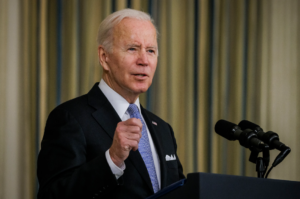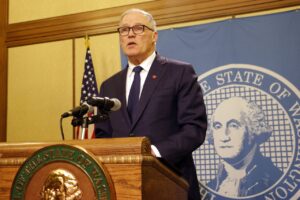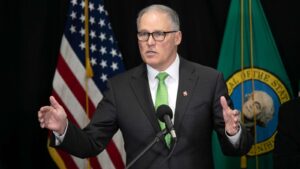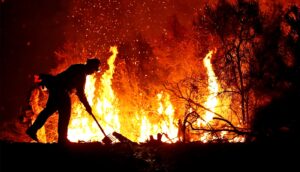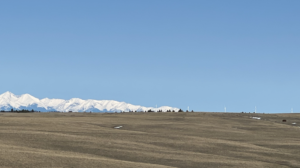‘It’s a movement’: Generations of Gulf Coast residents protest police violence, racism
4 min read
From small towns to large cities, Black communities who have long faced environmental injustice have spent the last two weeks protesting police brutality and systemic racism.
J. Mclean started organizing for racial justice while he was in high school in Ocean Springs, Mississippi. Passionate about changing his home state’s flag, which still bears a Confederate emblem, he reached out to the Mississippi Rising Coalition, a grassroots civil rights group on the Gulf Coast. They helped him found the Southern Youth Commission, whose teenage members marched in Mclean’s hometown of Biloxi in 2018, calling on the government to change the state flag.
Mclean, now a rising sophomore at Alcorn State University, returned to the streets of Biloxi after George Floyd was killed by Minneapolis police officers last month. He held a sign bearing the names of Black Mississippians who have been killed by law enforcement. Mclean gathered with other protesters along the same beach where, between 1959 and 1963, older members of his church had protested for integration and were violently attacked by a white mob as police watched.
“It’s a movement,” Mclean said. “We aren’t as big as the big cities and everything, but it’s coming along.”
Over the last two weeks, communities across the Gulf South gathered to protest against police brutality and white supremacy. Many of them were in areas where communities of color are also disproportionately affected by pollution, environmental hazards, and climate change. Large protests occurred in Houston, where George Floyd spent much of his life, and New Orleans, where thousands gathered every day last week to demand justice for victims of police violence.
Protests also reached far beyond urban centers. People took to the streets up and down the state of Alabama, from Huntsville to Mobile and Auburn to Hoover, where peaceful protesters were met by a large police presence. In Florida, crowds gathered in Panama City; in Ocala; and in Pensacola, chanting “I can’t breathe.” Black Lives Matter protests also took place in predominantly white suburbs like Denham Springs, Louisiana and the longtime Ku Klux Klan stronghold of Vidor, Texas.
Protests throughout Mississippi took on local issues, as well. In Petal, hundreds gathered to call for Mayor Hal Marx to resign after he said “If you can talk, you can breathe,” referencing Floyd’s final words before police killed him. Many in Columbus marched to protest the state’s attorney general, Lynn Fitch, for recently dropping a manslaughter charge against Canyon Boykin, a white former police officer who shot and killed Ricky Ball, a 26-year-old Black man during a traffic stop in 2015.
Mclean joined a rally on Sunday evening in Gulfport calling for the removal of a Confederate monument at the nearby Harrison County courthouse. “On the Gulf Coast, we have the Jefferson Davis home that actually receives government funding,” Mclean said. “We still have a Confederate statue in Gulfport. You know, we hear about other places, like I know Birmingham and Virginia and other places, they’ve taken down their Confederate statues already. But we’ve got a little bit farther to go down here.”
Gulf Coast states have some of the highest numbers of Black residents in the country: Mississippi and Louisiana are just behind Washington D.C. with the largest percentage, and Alabama is also high on the list. Many of these communities, which have been protesting racism for decades, are often the same ones where industrial projects, toxic waste sites, and other polluters are located.
In Africatown, Alabama, residents are fighting a shuttered paper plant for the pollution it caused in their backyards. In Cancer Alley — a stretch of the Mississippi River between New Orleans and Baton Rouge that is lined with petrochemical plants set next to predominantly Black communities — air pollution has contributed to high rates of coronavirus cases. As climate change brings more destructive storms to the Gulf Coast, Black communities often bear the brunt. In many cities, they see worse flooding because their neighborhoods have been built in floodplains, and government systems in place to help Americans recover after disasters often fail them.
Katherine Egland, environmental and climate justice committee chair for the NAACP national board of directors, is a longtime resident of Gulfport. She remembers getting her start as a young civil rights movement organizer in Hattiesburg, where she grew up. “We were actually fighting for access to some of the same areas where the environmental movement was fighting for protection,” she said. “We didn’t have the luxury of knowing about endangered species other than the fact that we were an endangered species. We didn’t have our rights.”
The recent protests have called attention to environmental racism and other injustices. For instance, in New Orleans, speakers at rallies last week called for the city to relocate residents of Gordon Plaza, a predominantly Black subdivision built atop a toxic landfill. Egland has long sought to show how intertwined efforts for environmental and racial justice are — and should be. This moment is no different for her.
“We can multitask,” she said. “When you’re looking at the pandemic, police pandemonium, and parallel environmental and climate justice, they’re all interconnected.”

